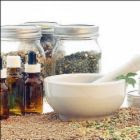| 4:28 AM |
Hemmroid Treatments |
 Hemmroid treatments can give quick and effective relief from discomfort and other problems associated with hemmroid when acted as early as its symptoms appear. There are now various prescription drugs as well as over-the-counter medicines available currently for hemmroid treatment. There are also alternative therapies for hemmroid treatment that can give you safe and long lasting results which includes homoeopathic and herbal medicines, dietary supplements and home made remedies . So there is no reason why you cannot treat your hemmroid before it becomes worst.
Hemmroid treatments can give quick and effective relief from discomfort and other problems associated with hemmroid when acted as early as its symptoms appear. There are now various prescription drugs as well as over-the-counter medicines available currently for hemmroid treatment. There are also alternative therapies for hemmroid treatment that can give you safe and long lasting results which includes homoeopathic and herbal medicines, dietary supplements and home made remedies . So there is no reason why you cannot treat your hemmroid before it becomes worst.But what is hemmroid by the way? Hemmroids are the network of veins around the anus area. The condition known as hemmroids occurs when these veins enlarge and distend usually caused by straining or pressure. The two types of hemmroids are internal and external. Internal hemmroids usually do not cause much pain and rarely itch while external hemmroids are the type of hemmroid that tends to cause burning, itching, and/or pain. Symptoms of hemmroid usually include blood in the stool, in the toilet, or on bath tissue after using the bathroom, or a vague pain in the anus after defecating. Also, itching, burning, or pain in the region may indicate a case of hemmroids.
Because of this irritating symptoms brought by hemmroid, appropriate hemmroid treatments are necessary. But most commonly, hemmroid treatments may require nothing more than home treatment and lifestyle changes, which mainly involves establishing healthy bowel habits and simple changes to healthy diet. But if you need instant relief from pain, itching and swelling brought by your hemmroid, try the following:
- Apply a hemmroidal cream or suppository to the affected area as directed.
- Use ice packs, which can reduce swelling from painful hemmroid.
- Soak in a warm bath or "sitz" bath (sitting in three inches of water) for 10 minutes a few times a day.
- A fiber laxative.
- A stool softener.
Although in many cases hemmroid treatment involves steps that you can take on your own but sometimes medications or surgical procedures are necessary as your best way as your hemmroid treatment. These includes:
Medications CReams
If your hemmroids are producing only mild discomfort, your doctor may suggest over-the-counter hemmroid creams, ointments or pads containing witch hazel or a topical anti-inflammatory agent containing hydrocortisone. This local hemmroid treatment, in combination with daily warm baths, may relieve your hemmroid symptoms.
Surgical or other procedures
If a blood clot has formed within an external hemmroid, your doctor can easily remove the clot with a simple incision, which may provide prompt relief. But for persistent bleeding or painful hemmroids, your doctor may recommend these following hemmroid treatments:
- Rubber band ligation. Your doctor places one or two tiny rubber bands around the base of an internal hemmroid to cut off its blood circulation and the hemmroid falls off. This simple procedure - called rubber band ligation - is done in the doctor's office and is effective hemmroid treatment for many people. To remove a hemmroid using rubber band ligation, your doctor inserts the ligator through a scope in the anal canal, grasping the hemmroid with forceps. Sliding the ligator's cylinder upward releases rubber bands around the base of the hemmroid. Rubber bands cut off the hemmroid's blood supply, causing it to wither and drop off.
- Sclerotherapy. In this procedure, your doctor injects a chemical solution around the blood vessel to shrink the hemmroid.
- Infrared light. A one- or two-second burst of infrared light cuts off circulation to small, bleeding, internal hemmroids.
- Surgery. If other procedures haven't been successful or if you have large hemmroids, your doctor can remove tissue in a procedure called hemmroidectomy. The surgery is done with either a local anesthetic combined with sedation, a spinal anesthetic, or a general anesthetic. Hemmroid surgery can be performed on an outpatient basis or you may require an overnight hospital stay. While you may experience discomfort after the procedure, medications can be used to relieve your pain. Soaking in a warm bath also can ease your discomfort.
- Stapling. This procedure, which blocks blood flow to hemmroidal tissue, is a relatively new hemmroid treatment technique. While some experts point out that this procedure involves less pain than surgery and allows an earlier return to work, there are drawbacks as well. Stapling has been associated with a greater risk of hemmroidal recurrence and prolapse compared with open surgery. Talk with your doctor about what might be the best hemmroid treatment option for you.
- Eat more fiber and drink plenty of fluids. This will help soften stools and promote regular elimination, which reduces straining thus avoiding the causes of such hemmroid.
- Go when you feel the urge to have a bowel movement. Delaying now can mean straining later.
- Don't read on the toilet. Sitting and straining too long encourages swelling.
- Wipe gently with soft, white unperfumed tissue. This helps keep the area clean to avoid irritation.
- Exercise regularly; which aids digestion and improves circulation.
So do not delay. Let your hemmroid be treated as early as its symptoms shows. Don’t be shy if you have that condition. You just don’t know that the number of people who hemmroid are now increasing due to poor eating habits and changes of lifestyle. You cant talk with your family regarding your shameful condition, talk directly to your doctor as he can help you. Your doctor can give you right hemmroid treatment.
0 comments:
Post a Comment